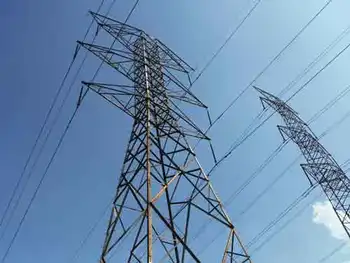Utilities set policies to help poor pay bills
HARRISBURG, PENNSYLVANIA - The state Public Utility Commission has a "policy statement" to guide utilities in how they run their customer assistance programs for the poor. But it has no formal rules on how the CAPs are to be funded, how generous they must be, or what utilities must do to attract eligible customers.
As a result, according to information supplied by the PUC Bureau of Consumer Services, utility CAPs vary widely on these issues. Mitch Miller, director of the PUC bureau, said it often comes down to a company's philosophy.
In response to Gov. Ed Rendell's call to double CAP enrollment, some utilities already have increased their enrollment targets or are considering doing so, but by far less than what the governor wants.
Here are some statistics for natural-gas utilities:
The overall average was 31 percent of eligible poor people enrolled in 2004.
For UGI, the figure is 20 percent.
Deborah Leuffen, a spokeswoman for UGI, said the utility is considering a "significant" increase in CAP enrollment, but she gave no numbers. She indicated, however, that it would be far less than Rendell wants.
UGI has an enrollment target of 4,000, but is serving about 4,385 customers. It collects $1.5 million a year from residential ratepayers to provide heating assistance for low-income customers, and it spent about $1.7 million in 2004.
Leuffen said UGI plans to do more outreach for its CAP, which is called Low Income Self-Help Program, or LISHP. Beginning in November, the outreach will include advertisements on bus shelters and radio ads in both English and Spanish.
For Columbia Gas, the figure is 27 percent.
Columbia Gas serves York, Franklin, Adams and Centre counties in central Pennsylvania. Rob Boulware, a spokesman, said 21,000 customers are enrolled in the company's CAP. With the current funding levels, he said, the number could go to 27,000.
A higher number would require going to the PUC for a method to raise the additional money, he said.
"For us to expand, to go to 54,000, we would need to go back before the [PUC]," Boulware said. "It's also a matter of getting customers in. Customers haven't stepped up to enroll."
Columbia spent $18.4 million on its CAP in 2004.
For electric utilities, the statistics show the following:
A 39 percent overall enrollment.
PPL Corp., which serves Dauphin and Cumberland counties, enrolled 14 percent of eligible customers in 2004.
PPL Electric, which had a transmission and distribution rate case in 2004, greatly increased its CAP funding beginning this year, although enrollment remains low.
George Lewis, a PPL spokesman, said the utility spent $12.9 million on its CAP in 2003, $14.7 million in 2004, and is on track to spend $17 million this year.
Yet the number of participants remains at about 15,000, and the percentage of participation continues at about 14 percent of those eligible.
Lewis said many customers with incomes low enough to qualify are current on their bills.
Those who do come in tend to have electric heat in their houses and owe more than another utility's typical CAP customer might owe. "They need more assistance," Lewis said.
Metropolitan Edison Co., which serves York and Lebanon counties, enrolled 20 percent. It is owned by FirstEnergy Corp. of Akron, Ohio, which also owns Pennsylvania Electric Co.
Pennsylvania Electric Co., which serves western Cumberland County, enrolled 23 percent.
Met-Ed's CAP has $4.9 million and Penelec's CAP has $6.9 million. FirstEnergy considers both programs to have funding problems.
"Because of budgetary constraints, the company is no longer able to keep pace with the unique needs of individual low-income, payment- troubled customers," FirstEnergy said in a Feb. 28 filing with the PUC. "The commission needs to provide a timely cost-recovery mechanism for necessary expenditures."
Penelec was fined $250,000 by the PUC last month for its handling of an electric service shut-off in Cambria County that has been linked to a fatal fire on May 14.
The utility had been trying to cut off new enrollments in its CAP for financial reasons in the months preceding the fire, according to company documents and a PUC official.
A major reason the fine was levied, according to the PUC, was because Penelec repeatedly had failed to refer Delores Holland and Jack Sexton to its CAP. Had they been referred, it is unlikely the shut-off would have occurred.
Holland died in the fire along with her grandson, 3, and two visiting friends of her teenage daughter, Chelsey Hammond. Sexton was severely injured when he leapt from the roof of the burning house. Hammond was rescued by firefighters.
Penelec spokesman Scott Surgeoner said the utility never told its call center managers to limit enrollments in the CAP. However, in a Feb. 28 petition to the PUC, Penelec had issued a threat to freeze enrollment unless the PUC gave it a new funding mechanism for the CAP.
"Based upon the current number of program participants and the amount of monthly program expenditures, the current annual budget for Penelec will not cover program expenditures for the current program year," Gary L. Gamler of Penelec wrote in a March 1 e-mail that was widely circulated. "As a result, the Penelec CAP will not be made available to new participants effective April 1."
That didn't happen.
Miller, director of the PUC Bureau of Consumer Services, said he began planning for a lawsuit to stop the enrollment freeze, and Penelec backed down. Instead, the company came back in July with a compromise plan. That plan asked to suspend a policy that allowed the company to forgive old utility debts for both new and existing customers. The bureau approved the suspension, which ends Jan. 1.
Penelec's Surgeoner disputes that it took the threat of a lawsuit from Miller to get the company to give up the plan to freeze new CAP enrollments. He also said the company is not pressing CAP customers for repayment of back payments during the suspension period.
Gamler wrote in his March 1 e-mail that 23.9 percent of Penelec's 506,000 residential customers have incomes low enough to qualify for CAP.
"This clearly reflects a societal challenge and responsibility for which it is unrealistic and unreasonable to expect an investor-owned utility to provide a financial solution," he wrote.
Related News

Spent fuel removal at Fukushima nuclear plant delayed up to 5 years
TOKYO - The Japanese government decided Friday to delay the removal of spent fuel from the Fukushima Daiichi nuclear power plant's Nos. 1 and 2 reactors by as much as five years, casting doubt on whether it can stick to its timeframe for dismantling the crippled complex.
The process of removing the spent fuel from the units' pools had previously been scheduled to begin in the year through March 2024.
In its latest decommissioning plan, the government said the plant's operator, Tokyo Electric Power Company Holdings Inc., will not begin the roughly two-year process at the No. 1 unit at least until…




